The Great Japan Earthquake of 1923
The powerful quake and ensuing tsunami that struck Yokohama and Tokyo traumatized a nation and unleashed historic consequences
/https://tf-cmsv2-smithsonianmag-media.s3.amazonaws.com/filer/Japan-Earthquake-Ueno-district-ablaze-631.jpg)
The first shock hit at 11:58 a.m., emanating from a seismic fault six miles beneath the floor of Sagami Bay, 30 miles south of Tokyo. A 60- by 60-mile segment of the Philippine oceanic plate ruptured and thrust itself against the Eurasian continental plate, releasing a massive burst of tectonic energy. Down at the docks of Yokohama, Japan’s biggest port and its gateway to the West, hundreds of well-wishers were seeing off the Empress of Australia, a 615-foot luxury steamship bound for Vancouver. “The smiles vanished,” remembered Ellis M. Zacharias, then a young U.S. naval officer, who was standing on the pier when the earthquake hit, “and for an appreciable instant everyone stood transfixed” by “the sound of unearthly thunder.” Moments later, a tremendous jolt knocked Zacharias off his feet, and the pier collapsed, spilling cars and people into the water.
The date was September 1, 1923, and the event was the Great Kanto Earthquake, at the time considered the worst natural disaster ever to strike quake-prone Japan. The initial jolt was followed a few minutes later by a 40-foot-high tsunami. A series of towering waves swept away thousands of people. Then came fires, roaring through the wooden houses of Yokohama and Tokyo, the capital, burning everything—and everyone—in their path. The death toll would be about 140,000, including 44,000 who had sought refuge near Tokyo’s Sumida River in the first few hours, only to be immolated by a freak pillar of fire known as a “dragon twist.” The temblor destroyed two of Japan’s largest cities and traumatized the nation; it also whipped up nationalist and racist passions. And the quake may have emboldened right-wing forces at the very moment that the country was poised between military expansion and an embrace of Western democracy, only 18 years before Japan would enter World War II.
The 9.0 earthquake that struck the northeast coast of Honshu this past March is not likely to have such an impact on Japan’s history. Nevertheless, there are parallels. Like the 1923 quake, this one unleashed secondary disasters: a tsunami that washed away dozens of villages; mudslides; fires; and damage to the Fukushima Daiichi reactors that emitted radiation into the atmosphere (and constituted the worst nuclear accident since the Chernobyl disaster in 1986). In both instances, the toll was considerable, with estimated deaths in the 2011 quake approaching 30,000 and damage that could go as high as $310 billion. Fuel, food and water were hard to come by weeks after the earthquake, and the Japanese government acknowledged that it had been ill-prepared for a calamity on this scale. Traditional figures offered words of solace: Crown Prince Hirohito 88 years ago; his son, Emperor Akihito, in 2011.
Before the Great Kanto Earthquake struck, Japan was full of optimism. No center symbolized the country’s dynamism more than Yokohama, known as the City of Silk. Founded as Japan’s first “Foreign Settlement” in 1859, five years after U.S. Commodore Matthew Perry forced the shogun to open Japan to the West, Yokohama had grown into a cosmopolitan city of half a million. Attracting entrepreneurs, fugitives, traders, spies and drifters from every corner of the world, the port rose “like a mirage in the desert,” wrote one Japanese novelist. From the waterfront promenade, known as the Bund, to the Bluff, the hillside neighborhood favored by foreign residents, Yokohama was where East met West, and liberal ideas—including democracy, collective bargaining and women’s rights—transfixed those who engaged them. Nobel nominee Junicho Tanizaki, who spent two years in Yokohama writing screenplays, marveled at “a riot of loud Western colors and smells—the odor of cigars, the aroma of chocolate, the fragrance of flowers, the scent of perfume.”
The Great Kanto Earthquake obliterated all of that in a single afternoon. According to survivors, the initial quaking lasted for about 14 seconds—long enough to bring down nearly every building on Yokohama’s watery, unstable ground. The three-story Grand Hotel, an elegant Victorian villa on the seafront that had played host to Rudyard Kipling, W. Somerset Maugham and William Howard Taft, collapsed, crushing hundreds of guests and employees. Twenty expatriate regulars at the Yokohama United Club, the city’s most popular watering hole, died when the concrete building pancaked. Otis Manchester Poole, a 43-year-old American manager of a trading firm, stepped out of his largely still-intact office near the Bund to face an indelible scene. “Over everything had settled a thick white dust,” he remembered years later, “and through the yellow fog of dust, still in the air, a copper-coloured sun shone upon this silent havoc in sickly reality.” Fanned by high winds, fires from overturned cookstoves and ruptured gas mains spread. Soon, the entire city was ablaze.
Meanwhile, a wall of water surged from the fault zone toward the coast of Honshu. Three hundred people died in Kamakura, the ancient capital, when a 20-foot-high wave washed over the town. “The tidal wave swept out a great section of the village near the beach,” wrote Henry W. Kinney, a Tokyo-based editor for Trans-Pacific magazine. “I saw a thirty-foot sampan [boat] that had been lifted neatly on top of the roof of a prostrated house. Vast portions of the hills facing the ocean had slid into the sea.”
Although the shock waves had weakened by the time they reached through the Kanto region to Tokyo, 17 miles north of Yokohama, many poorer neighborhoods built on unstable ground east of the Sumida River collapsed in seconds. Then, as in Yokohama, fires spread, fueled by flimsy wooden houses and fanned by high winds. The quake destroyed the city’s water mains, paralyzing the fire department. According to one police report, fires had broken out in 83 locations by 12:15. Fifteen minutes later, they had spread to 136. People fled toward the Sumida River, drowning by the hundreds when bridges collapsed. Tens of thousands of working-class Japanese found refuge in an empty patch of ground near the river. The flames closed in from all directions, and then, at 4 p.m., a 300-foot-tall “fire tornado” blazed across the area. Of the 44,000 people who had gathered there, only 300 survived. All told, 45 percent of Tokyo burned before the last embers of the inferno died out on September 3.
As the evening of the quake approached, Kinney observed, “Yokohama, the city of almost half a million souls, had become a vast plain of fire, of red, devouring sheets of flame which played and flickered. Here and there a remnant of a building, a few shattered walls, stood up like rocks above the expanse of flame, unrecognizable....It was as if the very earth were now burning. It presented exactly the aspect of a gigantic Christmas pudding over which the spirits were blazing, devouring nothing. For the city was gone.”
The tragedy prompted countless acts of heroism. Thomas Ryan, a 22-year-old U.S. naval ensign, freed a woman trapped inside the Grand Hotel in Yokohama, then carried the victim—who had suffered two broken legs—to safety, seconds ahead of a fire that engulfed the ruins. Capt. Samuel Robinson, the Canadian skipper of the Empress of Australia, took hundreds of refugees aboard, organized a fire brigade that kept the ship from being incinerated by advancing flames, then steered the crippled vessel to safety in the outer harbor. Then there was Taki Yonemura, chief engineer of the government wireless station in Iwaki, a small town 152 miles northeast of Tokyo. Hours after the earthquake, Yonemura picked up a faint signal from a naval station near Yokohama, relaying word of the catastrophe. Yonemura tapped out a 19-word bulletin—CONFLAGRATION SUBSEQUENT TO SEVERE EARTHQUAKE AT YOKOHAMA AT NOON TODAY. WHOLE CITY ABLAZE WITH NUMEROUS CASUALTIES. ALL TRAFFIC STOPPED—and dispatched it to an RCA receiving station in Hawaii. For the next three days, Yonemura sent a stream of reports that alerted the world to the unfolding tragedy. The radio man “flashed the news across the sea at the speed of sunlight,” reported the New York Times, “to tell of tremendous casualties, buildings leveled by fire, towns swept by tidal waves...disorder by rioters, raging fire and wrecked bridges.”
Yonemura’s bulletins helped to galvanize an international relief effort, led by the United States, that saved thousands from near-certain death or prolonged misery. U.S. naval vessels set sail from China on the evening of September 2, and within a week, dozens of warships packed with relief supplies—rice, canned roast beef, reed mats, gasoline—filled Yokohama Harbor. From Washington, President Calvin Coolidge took the lead in rallying the United States. “An overwhelming disaster has overtaken the people of the friendly nation of Japan,” he declared on September 3. “The cities of Tokyo and Yokohama, and surrounding towns and villages, have been largely if not completely destroyed by earthquake, fire and flood, with a resultant appalling loss of life and destitution and distress, requiring measures of urgent relief.” The American Red Cross, of which Coolidge was the titular head, initiated a national relief drive, raising $12 million for victims.
The wave of good feeling between the two countries would soon dissipate, however, in mutual accusations. Japanese expressed resentment toward Western rescuers; demagogues in the United States charged that the Japanese had been “ungrateful” for the outpouring of help they received.
The earthquake also exposed the darker side of humanity. Within hours of the catastrophe, rumors spread that Korean immigrants were poisoning wells and using the breakdown of authority to plot the overthrow of the Japanese government. (Japan had occupied Korea in 1905, annexed it five years later and ruled the territory with an iron grip.) Roving bands of Japanese prowled the ruins of Yokohama and Tokyo, setting up makeshift roadblocks and massacring Koreans across the earthquake zone. According to some estimates, the death toll was as high as 6,000.
My own view is that by reducing the expatriate European community in Yokohama and putting an end to a period of optimism symbolized by that city, the Kanto earthquake accelerated Japan’s drift toward militarism and war. Japan scholar Kenneth Pyle of the University of Washington says that conservative elites were already nervous about democratic forces emerging in society, and “the 1923 earthquake does sort of begin to reverse some of the liberal tendencies that appear right after World War I....After the earthquake, there’s a measurable increase in right-wing patriotic groups in Japan that are really the groundwork of what is called Japanese fascism.” Peter Duus, an emeritus professor of history at Stanford, states that it was not the earthquake that kindled right-wing activities, “but rather the growth of the metropolis and the emergence of what the right wing regarded as heartless, hedonistic, individualistic and materialist urban culture.” The more significant long-term effect of the earthquake, he says, “was that it set in motion the first systematic attempt at reshaping Tokyo as a modern city. It moved Tokyo into the ranks of world metropolises.”
University of Melbourne historian J. Charles Schencking sees the rebuilding of Tokyo as a metaphor for something larger. The earthquake, he has written, “fostered a culture of catastrophe defined by political and ideological opportunism, contestation and resilience, as well as a culture of reconstruction in which elites sought to not only rebuild Tokyo, but also reconstruct the Japanese nation and its people.”
Though they may dispute its effects, historians agree that the destruction of two great population centers gave voice to those in Japan who believed that the embrace of Western decadence had invited divine retribution. Or, as philosopher and social critic Fukasaku Yasubumi declared at the time: “God cracked down a great hammer” on the Japanese nation.
Regular contributor Joshua Hammer is the author of Yokohama Burning, about the Great Kanto Earthquake of 1923.
/https://tf-cmsv2-smithsonianmag-media.s3.amazonaws.com/accounts/headshot/Screen_Shot_2021-09-15_at_12.44.05_PM.png)
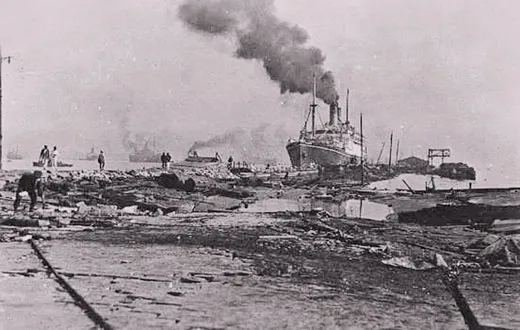
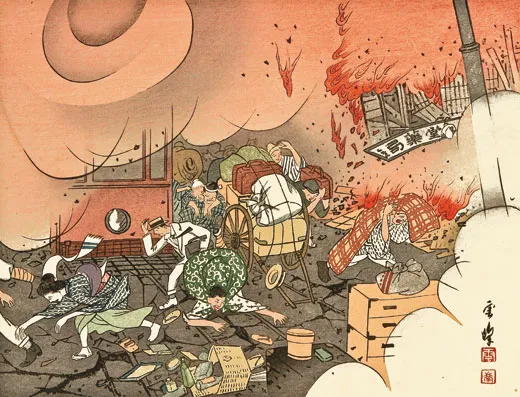
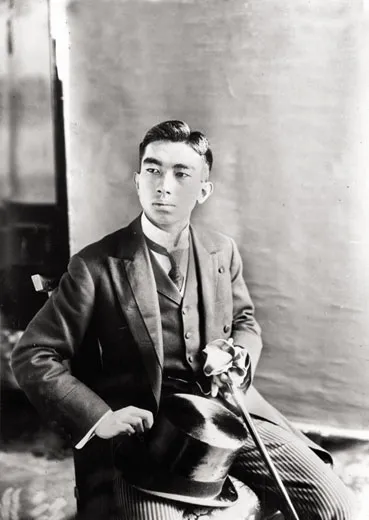
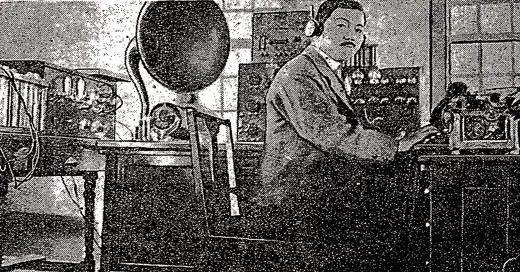

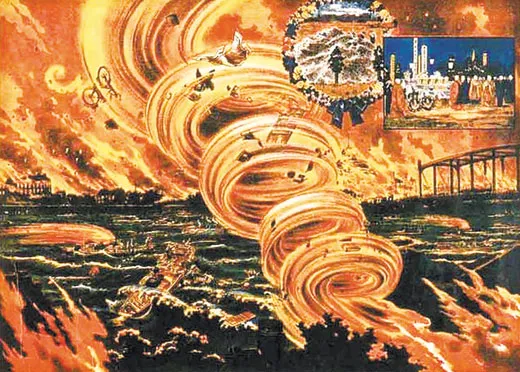
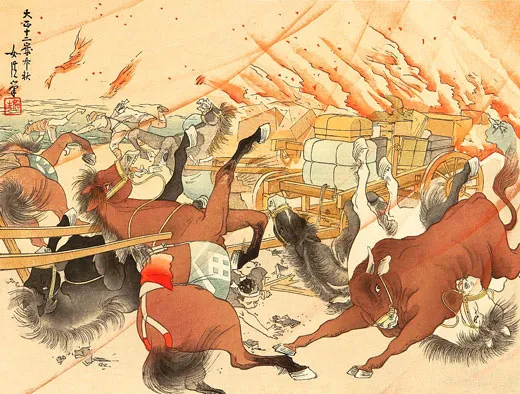
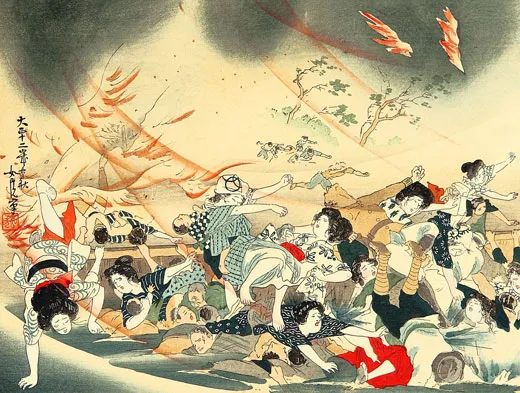
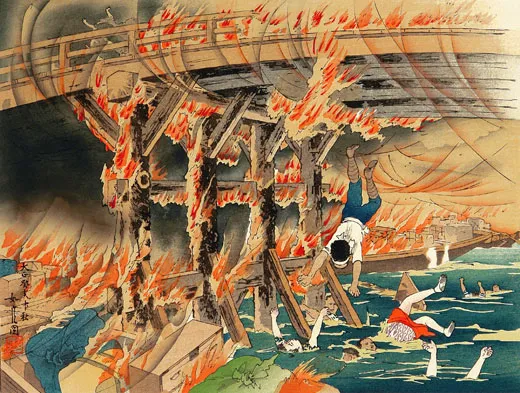
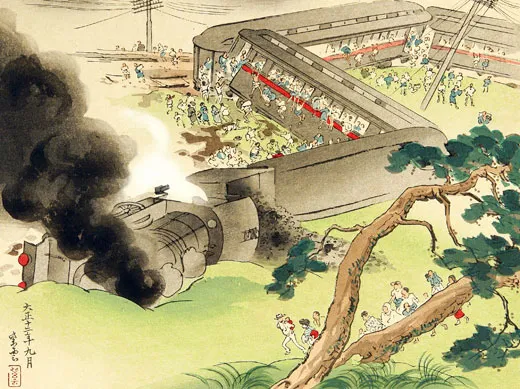
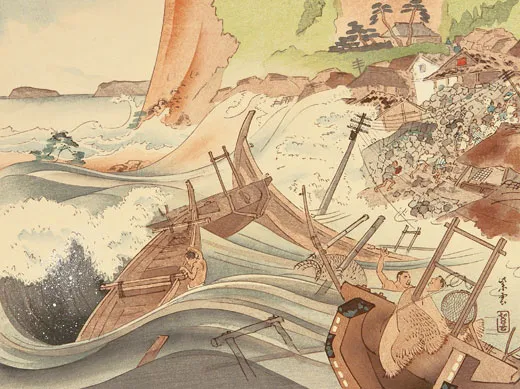
/https://tf-cmsv2-smithsonianmag-media.s3.amazonaws.com/accounts/headshot/Screen_Shot_2021-09-15_at_12.44.05_PM.png)